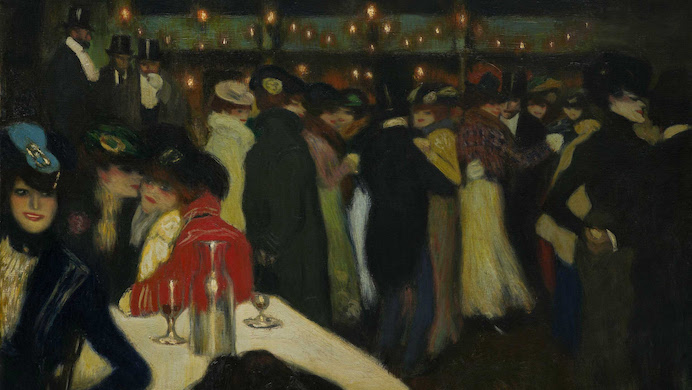Cancel Culture Has Its Claws Out for One Pablo Picasso
It’s enough to make one wonder how the organizer of the Guggenheim’s upcoming ‘Young Picasso in Paris’ will address the puritanical minefield that is contemporary culture.

A recent headline in the Guardian posited the question: “Should we cancel Picasso?” This query was prompted by the 50th anniversary of Pablo Picasso’s passing — he died on April 8, 1973, at the age of 91 — and an upcoming slate of exhibitions honoring and, in one case dishonoring, his art. The erstwhile Spaniard was not, as it turns out, an exemplary human being, but we all knew that.
The Guardian and other arbiters of culture are, in that regard, woefully behind the times. Take Margot and Rudolf Wittkower, art historians who have long since departed to their great reward. In their essential book “Born Under Saturn: The Character and Conduct of Artists” (1963), the Wittkowers spend a lot of time gauging the differences between the attributes of works of art and the artists who created them. Fra Filippo Lippi wouldn’t have survived #MeToo; Titian was a ruthless capitalist.
People who make beautiful things often aren’t pure, nice, or good: Who would’ve thunk it?
The Wittkowers were stating facts, not engaging in armchair moralizing, political posturing, or public shaming. They were able to differentiate between the aesthetic worth of a given work of art and the fallibility of its maker. The Wittkowers, God bless them, were the parents in the room.
It’s enough to make one wonder how Megan Fontanella, the curator of Modern Art and Provenance at the Solomon R. Guggenheim Museum and organizer of “Young Picasso in Paris,” will address the puritanical minefield that is contemporary culture. Will she navigate around the armaments or set them off in the cause of social justice? The exhibition opens to the public on May 12.
“Young Picasso in Paris” will be an intimate show of 10 pieces centering on “Le Moulin de la Galette” (1900), the Spaniard’s homage to the Parisian demimonde and, especially, his hero, Henri de Toulouse-Lautrec. Picasso’s devotion to the older artist is so slavish that a casual museum attendee couldn’t be blamed for mistaking his canvas for the real thing. It’s a bravura performance, though there is little in it to herald the radical innovator Picasso would become. He was a 19-year-old kid, for Pete’s sake, cut him some slack.

How much slack will be apportioned in “It’s Pablo-matic: Picasso According to Hannah Gadsby,” an exhibition set to open June 2 at the Brooklyn Museum? Best to keep an open mind about historical revisionism, but, as the old joke has it, we shouldn’t be so open-minded that our brains fall out. The press release states, not incorrectly, that the 20th century was “problematic” and goes on to note that “the nostalgia for it fuels much of the intergenerational conflict of the current century. We are still being ruled by monsters from the 1900s, so why not celebrate Picasso as the perfect mascot for such a monstrously arrogant and destructive century?”
Picasso had not a few sins to his discredit, absolutely, but there must be more emblematic mascots for the failures of the last century. A cursory internet search would, in all likelihood, disclose a number of “monstrously arrogant and destructive” figures. Picasso, I’d wager, would be down toward the bottom of the list. Perhaps Hannah Gadsby is unfamiliar with the web.
To be fair, the Brooklyn Museum does admit that el viejo, with his “controlling and objectifying gaze,” did help create space for binaries of every variety. But shouldn’t the new generation of gatekeepers be on the lookout for positive role models — I mean, it’s all about doing the work, right? In that spirit, let me make two suggestions: Peter Paul Rubens and Jack Benny.

Rubens and Benny don’t, admittedly, fit the profile being cisgendered scions of the patriarchy and all that, but they are the rare creative individuals — possibly the only creative individuals — who lived their lives to noble purpose and treated those around them with dignity and kindness. That, and I’m told by sundry Gen Zers that Rubens was on the forefront of body positivity. A curator could do worse than pick up the ball for either of these two unproblematic figures.
In the meantime, our institutions continue to do their thing. The art within their walls is there to look out on our own initiative and for our own individual pleasure.

